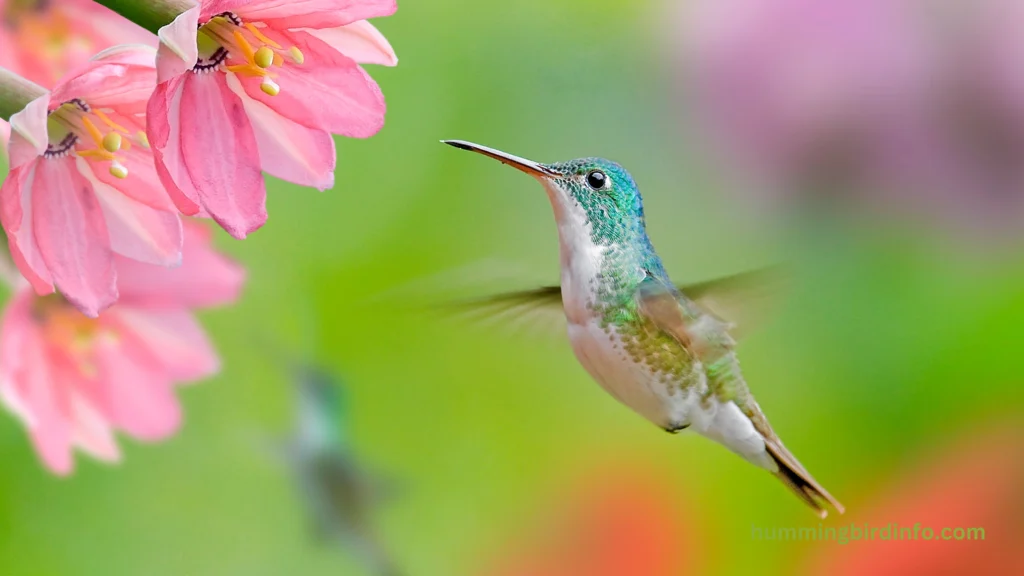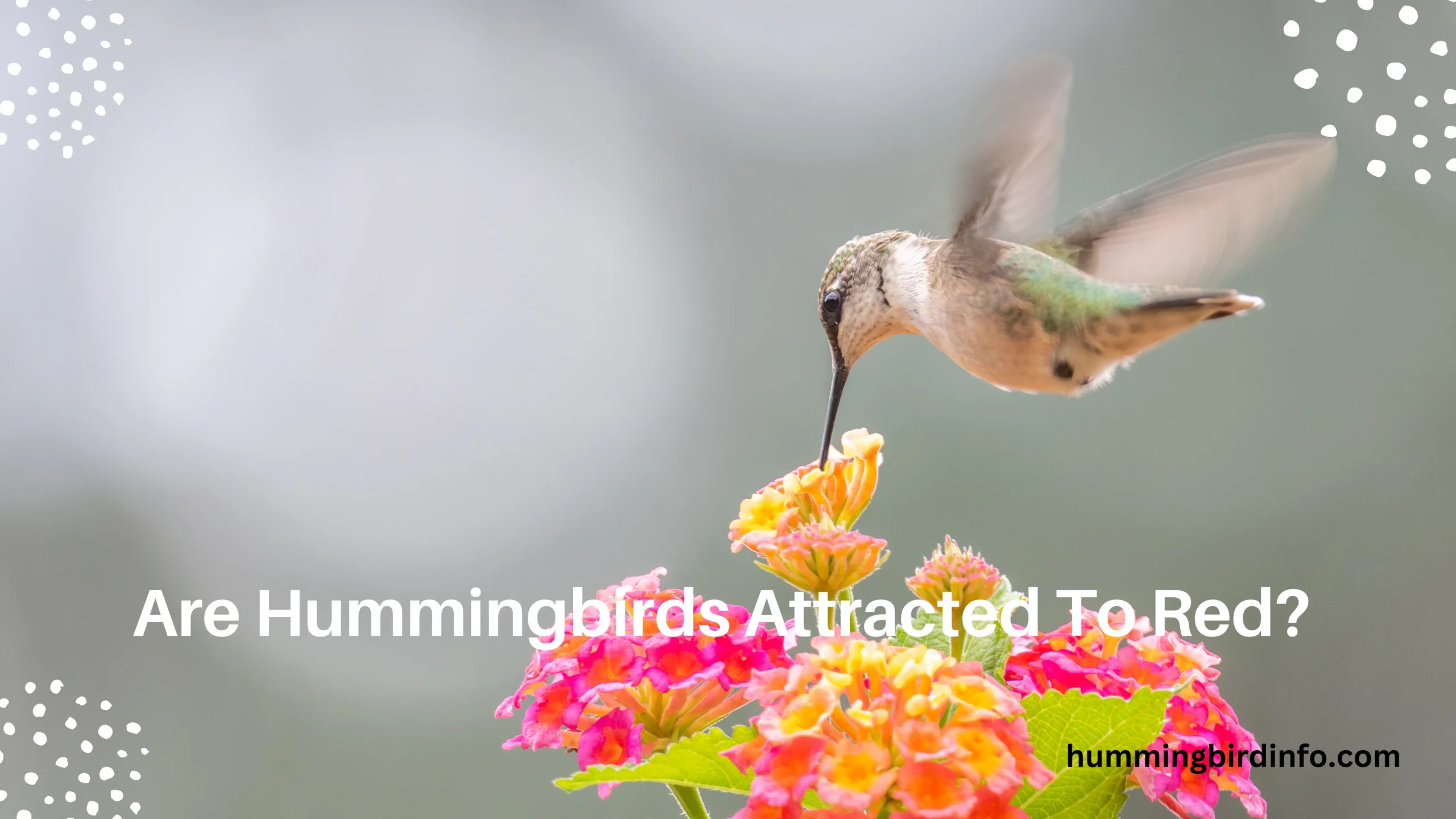In a quiet garden, a flash of iridescent feathers darts through the air, hovering effortlessly near a bright red bloom. It’s no coincidence that the tiny visitor—a hummingbird—has chosen a red flower.
Gardeners and bird lovers have long noticed this pattern, and many swear by red feeders to attract these winged wonders.
The idea that hummingbirds are drawn to red is more than just folk wisdom—it’s backed by science, behavior, and evolution. But have you ever wondered why this vibrant hue holds such power over these tiny birds? Do they actually prefer red, or is it a trick of nature—or maybe even nurture?
In this article, we’ll explore the truth behind hummingbirds’ fascination with red. From their unique color vision to their learned behaviors and the clever tactics of plants, we’ll uncover why red stands out in their world. If you’re hoping to bring more hummingbirds to your yard or just curious about how nature works, you’re in the right place.
Contents
- 1 Hummingbird Color Vision
- 2 Conclusion
- 3 FAQs
- 3.1 1. Why are hummingbirds attracted to red?
- 3.2 2. Can hummingbirds see other colors besides red?
- 3.3 3. Should I add red dye to hummingbird feeders?
- 3.4 4. Do all red flowers attract hummingbirds?
- 3.5 5. Why don’t bees visit red flowers as much?
- 3.6 6. Can I use other colors in my garden to attract hummingbirds?
Hummingbird Color Vision
Hummingbirds see the world in ways we can’t even imagine. While humans are trichromatic—able to see red, green, and blue—hummingbirds are tetrachromatic, meaning they can detect ultraviolet (UV) light as well.
This gives them an expanded color spectrum, allowing them to perceive colors we can’t, like ultraviolet-red or ultraviolet-green. This heightened vision helps them find nectar-rich flowers, even from a distance.
Their eyes are especially sensitive to colors in the red-orange spectrum, making red flowers stand out like neon signs. This explains why red elements in feeders and flowers catch their attention so easily.
The Color Red in Nature
Many flowers have evolved to be red to attract hummingbirds. This color often signals a rich nectar reward, forming a mutual relationship between the bird and the plant.
Interestingly, red flowers tend to discourage bees, which don’t see red well. This helps reduce competition for nectar, leaving more for the hummingbirds.
From trumpet creepers to bee balm, red blooms are hummingbird favorites around the world. Still, they won’t pass up non-red flowers if the nectar is right.
Learned Association and Behavior
Young hummingbirds quickly learn to link red with food. If they find nectar in a red flower once, they’ll keep checking red blooms for more.
Thanks to their impressive memory, they remember which flowers (and feeders) gave them the best rewards. This behavior reinforces their preference for red over time.

Feeder manufacturers know this too—red plastic parts are almost always included. But hummingbirds also visit feeders in orange, pink, and even purple if nectar is inside.
Implications for Attracting Hummingbirds
Want more hummingbirds in your garden? Start by planting native red flowers like coral honeysuckle, firebush, or cardinal flower to get their attention.
Choose feeders with red components, but avoid adding red dye to the sugar water. It’s unnecessary and can be harmful to the birds.
Also, maintain a clean, shaded feeder with fresh sugar water (1:4 ratio) and avoid pesticides. Add water features and shrubs for cover to create a hummingbird haven.
Expanding the Color Palette
While red is a hummingbird magnet, it’s not their only interest. These birds are smart and will quickly associate other colors with food once discovered.
Having a variety of colors in your garden not only attracts hummingbirds but also welcomes bees, butterflies, and other pollinators, creating a thriving ecosystem.
Some flowers also reflect ultraviolet light, making them stand out to birds even if they don’t look flashy to us. Nature has more color tricks up her sleeve than we realize.
Conclusion
Yes, hummingbirds are attracted to red, and for good reasons. Their unique color vision, combined with evolution and learning, makes red flowers and feeders especially appealing.
From their ability to see UV light to their sharp memory and behavior patterns, these tiny birds have evolved to find food efficiently, with red acting as a visual beacon.
To attract them, plant red flowers, offer clean feeders, and avoid harmful dyes. Mix in other colors too, and enjoy the magical sight of hummingbirds darting through your yard.
Above all, let this remind us how nature works in brilliant and subtle ways, blending science and beauty in every flap of a hummingbird’s wing.
FAQs
1. Why are hummingbirds attracted to red?
Hummingbirds are drawn to red because of their enhanced vision, which makes red stand out. It often signals nectar-rich flowers, reinforcing the connection.
2. Can hummingbirds see other colors besides red?
Yes, they can see a wide range of colors, including ultraviolet light. They also visit flowers in orange, pink, purple, and blue shades.
3. Should I add red dye to hummingbird feeders?
No, red dye is unnecessary and potentially harmful. A red-colored feeder is enough to attract hummingbirds.
4. Do all red flowers attract hummingbirds?
Not all, but many red flowers that produce nectar are appealing. The shape, nectar content, and visibility matter just as much.
5. Why don’t bees visit red flowers as much?
Bees have different color vision and can’t see red well. This allows hummingbirds to have less competition for nectar in red blooms.
6. Can I use other colors in my garden to attract hummingbirds?
Absolutely. While red is effective, a mix of flower colors creates diversity and helps attract multiple pollinator species.








